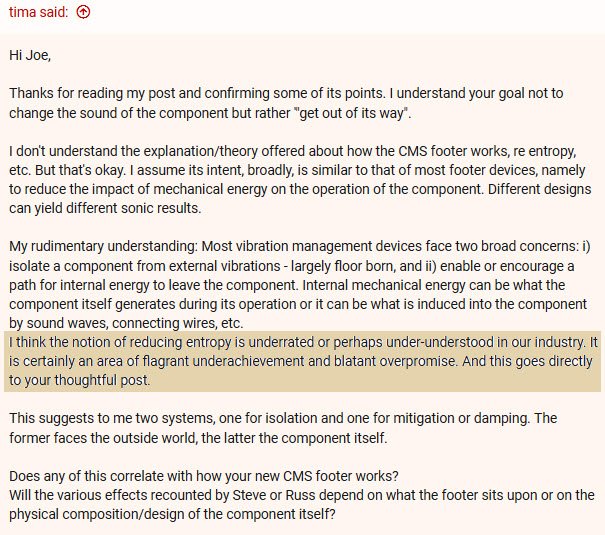Hi Joe,
Thank you for reply to my post and questions. You were helpful.
First, an administrative matter: In your quote of my message
#122, the shaded words are not mine. I did not write that. Maybe you pasted something by accident when quoting me. (see below)
View attachment 80961
With that out of the way ...
I am not a physicist and it has been a while since Physics 101 in college, so these Laws of Thermodynamics are not at my fingertips.
I vaguely recall the First Law ties to a general Law about the Conservation of Energy - it can be neither created nor destroyed. Energy moves around in different forms. Gurgle tells me the First Law of Thermodynamics is about work (energy transferred by a system to its surroundings) and heat (energy transferred to or from a system by other than work or matter.) Or something like that.
The Second Law of Thermodynamics establishes the notion of entropy (from a Greek word for '
transformation') as a concept and physical property. Vaguely I understand it is about the transfer of energy and the fact that other conditions necessarily obtain during the transfer.
My sense is that these Laws simply obtain - they hold for all audio component footers and the world generally. Thus saying that the CMS footers operate based on the First and Second Laws of Thermodynamics is true. Could any other footer manufacturer say the same thing? Equally true is the claim that brand X footers operate under Newton's Law of Gravity. That these two Laws of Thermodynamics are cited as explanations for how the footers work is not personally helpful to me in understanding how the footers work. That is not a criticism - you have no obligation for my understanding. Saying such may be highly insightful to those who have a firm grasp on the implementation of these particular physical principles - how many audiophiles are included in that group, I don't know. I do understand that getting from Laws of Thermodynamics to CMS footers requires a whole lot more information (some proprietary?) than you'd want to divulge in order to protect your intellectual property rights. For me the explanatory gap is too great.
From your post in the
thread "Center Stage 2", which I just now saw:
Now this I understand, except for the part about 'transferring entropy' - which my meager Newtonian mind translates to enabling the movement of energy out of the component. Maybe that is incorrect or simply unsophisticated. I have a vague sense of "thin speed rod" as relating to oscillation and energy transference - vibrations travel at different speeds. And "elastic modulus" - a material's tendency to deformity. I understand making use of materials science - I presume advances in damping and other materials are on-going.
I've written a few reviews of vibration management audio products and I'm interested in how manufacturers use words to describe their wares. So looking at your footers from a reviewer's expository perspective I would not be inclined to write about Laws of Thermodynamics or say these things operate according to the laws of nature without a lot more detail. Of course I could be wrong - maybe you've done the marketing research and found that approach works for your audience. Good luck and thanks for your help.


